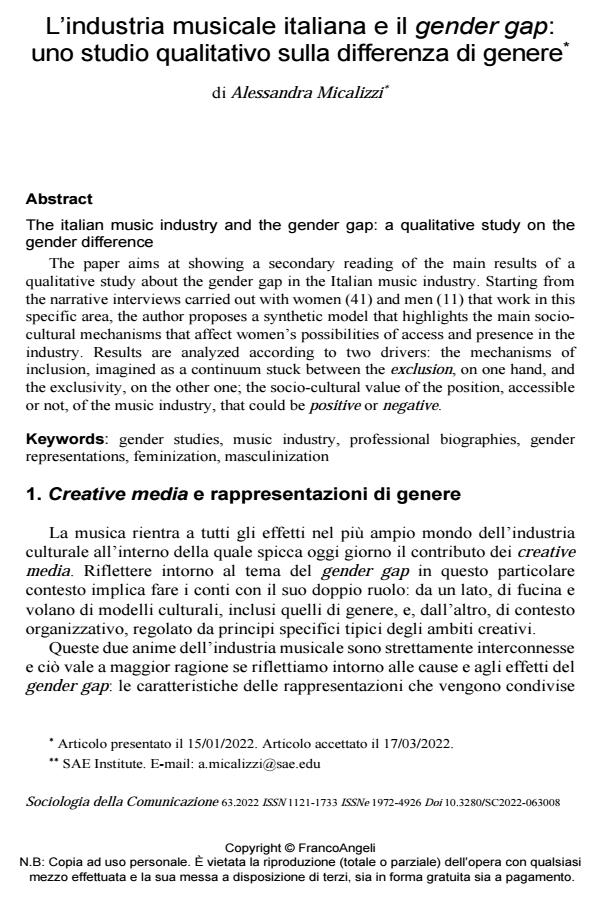L’industria musicale italiana e il gender gap: uno studio qualitativo sulla differenza di genere
Titolo Rivista SOCIOLOGIA DELLA COMUNICAZIONE
Autori/Curatori Alessandra Micalizzi
Anno di pubblicazione 2022 Fascicolo 2022/63
Lingua Italiano Numero pagine 19 P. 133-151 Dimensione file 321 KB
DOI 10.3280/SC2022-063008
Il DOI è il codice a barre della proprietà intellettuale: per saperne di più
clicca qui
Qui sotto puoi vedere in anteprima la prima pagina di questo articolo.
Se questo articolo ti interessa, lo puoi acquistare (e scaricare in formato pdf) seguendo le facili indicazioni per acquistare il download credit. Acquista Download Credits per scaricare questo Articolo in formato PDF

FrancoAngeli è membro della Publishers International Linking Association, Inc (PILA)associazione indipendente e non profit per facilitare (attraverso i servizi tecnologici implementati da CrossRef.org) l’accesso degli studiosi ai contenuti digitali nelle pubblicazioni professionali e scientifiche
The paper aims at showing a secondary reading of the main results of a qualitative study about the gender gap in the Italian music industry. Starting from the narrative interviews carried out with women (41) and men (11) that work in this specific area, the author proposes a synthetic model that highlights the main socio-cultural mechanisms that affect women’s possibilities of access and presence in the industry. Results are analyzed according to two drivers: the mechanisms of inclusion, imagined as a continuum stuck between the exclusion, on one hand, and the exclusivity, on the other one; the socio-cultural value of the position, accessible or not, of the music industry, that could be positive or negative.
Parole chiave:gender studies, music industry, professional biographies, gender representations, feminization, masculinization
Alessandra Micalizzi, L’industria musicale italiana e il gender gap: uno studio qualitativo sulla differenza di genere in "SOCIOLOGIA DELLA COMUNICAZIONE " 63/2022, pp 133-151, DOI: 10.3280/SC2022-063008